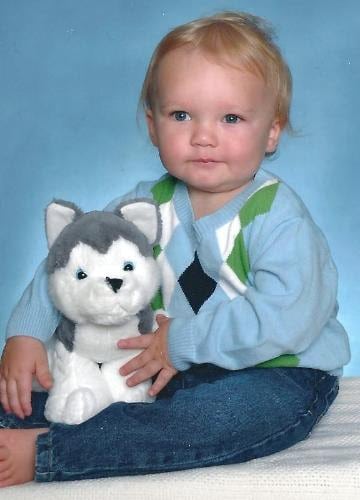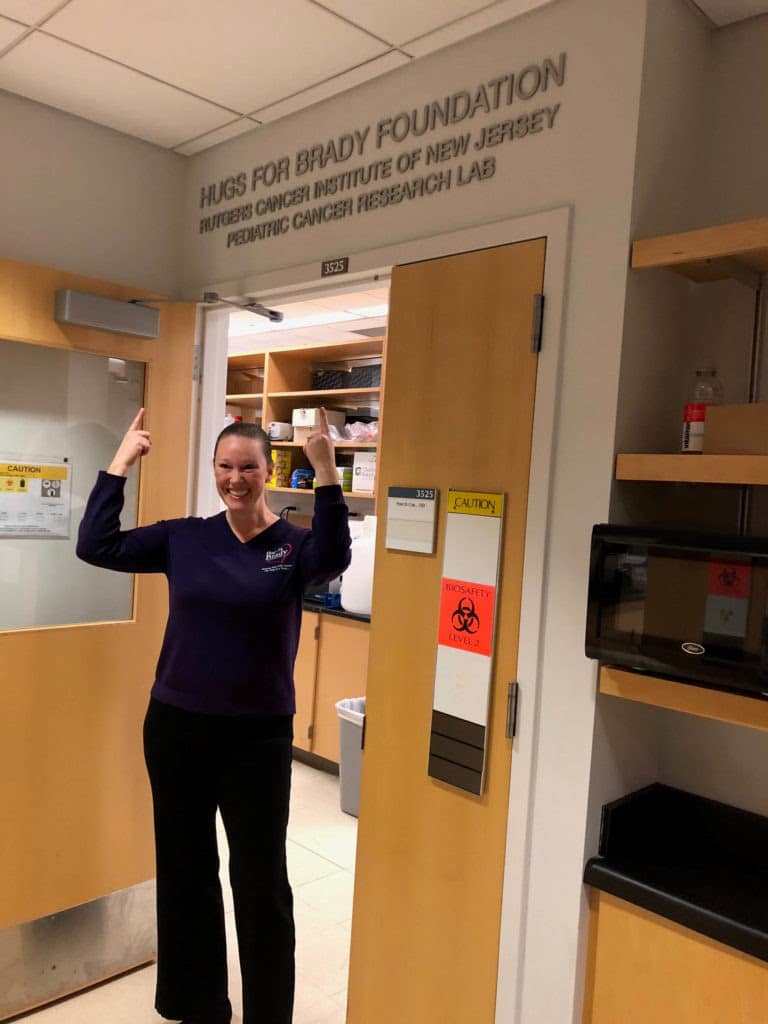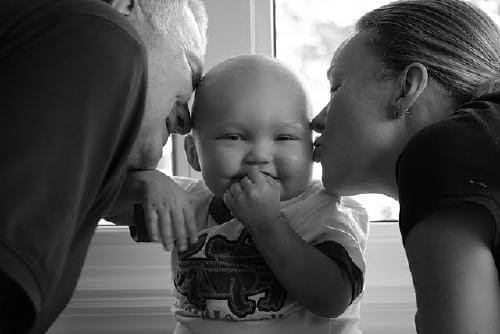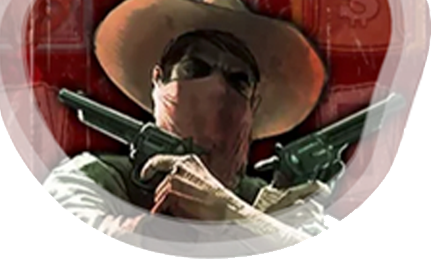The Hugs for Brady Foundation
Thousands of children every year in the United States suffer from some form of pediatric cancer. As adult forms of cancer are much more commonly researched, there is limited research conducted into possible cures for cancer in children.
Sherrie Wells, co-founder and executive director of Hugs for Brady Foundation, believes that the way to find a cure for adult forms of cancer is through research of pediatric forms of cancer. Hugs for Brady supports scientific research into cures for pediatric cancer.
Listen here or find us on your favorite podcast app.
November 23, 2020
Fighting for the ‘Aha Moment’ in Pediatric Cancer



Fighting for the ‘Aha Moment’ in Pediatric Cancer
“The very next researcher or scientist that puts a cell in a petri dish could say, aha, this is it, you just don't know. And we're waiting for that aha moment.” Sherrie Wells, Hugs for Brady Foundation Co-Founder
We recently spoke with Sherrie Wells, the co-founder and executive director of Hugs for Brady Foundation, a grassroots, non-profit organization seeking to relieve the financial burden from families with children suffering from pediatric cancer. As it is much less common than cancer found in adults, research into pediatric cancer is limited. Through fundraising, Hugs for Brady supports scientific research into cures for pediatric cancer, believing that a cure for pediatric cancers will also mean a cure for adult cancers. Watch the full video interview here.
Alongside several other small foundations, Hugs for Brady raises money for cancer foundations across the United States, knowing that every donation could lead to a cure. Sherrie and her husband Michael underwent the same struggles that families across the world are going through now. Their young child, Brady, suffered from leukemia for nearly a year before tragically losing his battle. Due to a lack of healthcare through her employer, Sherrie was forced to quit her job to take care of Brady while her husband continued working, as his employer provided healthcare for their family.
This is a very common situation for many families living this reality. In these times, difficult financial and life decisions must be made. Founded nearly 10 years ago, Hugs for Brady has raised nearly five million dollars to support research and individual families struggling financially with the costs of pediatric cancer treatment. From the costs of treatment to clothing, toys, televisions and gaming units, Hugs for Brady believes that children undergoing treatment must be surrounded only with joy, happiness and comfort.
During Brady’s treatment, there weren’t any safe chairs or wagons available to allow Brady to move around the hospital with his IV. This struggle led to the creation of Brady’s Buggy Wagons, allowing children receiving cancer treatment to socialize with other children. Doctors have widely noted the psychological improvements they have seen in children using them. Today, hospitals around the world have begun to purchase these wagons.
Towards the end of the interview, Sherrie shared with us “I don't necessarily know that there will be a cure for any of the 12 or 13 major pediatric cancers in my lifetime. But that's something that I have to hang on to. I have to have hope and optimism. I do know one thing for sure. If we don't try, there isn't going to be a cure. So we have to keep trying. We have to be optimistic. We have to have hope. We have to keep donating. These children need our help. They need our support. And we have to give them the best chance possible to live.”
Hugs for Brady will be celebrating their 10 year anniversary later this year to reflect upon all of the progress they made and to continue fighting for a cure to pediatric and adult cancers.
Want to learn more about Hugs for Brady Foundation? You can subscribe to their newsletter, which can be found on their website in their news section at the bottom of the page, and follow them on Facebook, Instagram and Twitter.
Are you wondering how our unique business model works? It goes as follows — we give people who want to play casino games the information they need to know where to play, and donate all the profits this generates to impactful climate change causes. We operate in Sweden and New Jersey. You can check out our unbiased and informative reviews of NJ online casinos, starting with some of the most popular casinos like ‘Borgata online’.
[00:00:00]
Every day you and I get bombarded with negative news. Just like the body becomes what we eat, the mind becomes what we’re putting in. It is important to listen to stories that not only give you hope, but also inspire you and uplift you.
[00:00:17]
In this podcast, we’re interviewing experts who will break down the solutions to the world’s most pressing problems. And I promise you, if you listen to this podcast, you’ll not only stay informed but you will also feel more energy in your life. Welcome to Great.com Talks With.
[00:00:43]
Hey, if you want to protect planet Earth, make sure you like and subscribe to this channel because great.com is donating one hundred percent of the profit to the most affected areas like protecting the rainforest or funding climate change technology. And the topic of today is how do we support children with cancer? And is it possible to eradicate cancer or how close are we to do that? To understand more about this we have invited Sherrie Wells, who is the co-founder and executive director of Hogg’s for Brady Foundation, Hugs for Brady Foundation. So I want to say welcome Sherrie to this interview.
[00:01:22]
Thank you. Thanks for having me.
[00:01:26]
Could you help us understand like cancer has been with us for a long time and how big is this problem if we connect this to children today?
[00:01:39]
Sure. So it’s huge. It’s a huge issue. I can tell you that when my son Brady was diagnosed with cancer, he was just a year old and the first year of his life, he was completely healthy. So not even a diaper rash that it was a complete shock to us. We had no signs of cancer previous to this in our family. Nothing was wrong with him. And it literally came out of left field and surprised all of us. And when we brought him to the hospital. Cancer was the furthest thing from our mind. We didn’t know what was wrong with him, we just knew it was something and he spiked one hundred and five degree fever and we couldn’t get that fever down for a week. So they finally did a bone marrow biopsy and discovered that he did have leukemia cells in his spine and throughout his body. The reaction from my husband and I was extremely different. I lived in a very naive bubble. I was under the impression that only a handful of children, maybe a dozen or so in America, got diagnosed with cancer a year. They all went to one specific hospital and they all got cured. So I was actually relieved when we got this diagnosis because now we had a game plan. We knew what treatment protocol to do and he was going to be OK.
[00:03:09]
So I was very pleased. My husband, on the other hand. Wept incredibly, fell to his knees. It was completely devastating. He knew the statistics and the facts. So unfortunately, just in our small state of New Jersey, there’s over two thousand children battling cancer. There are a lot of children battling cancer. The problem is there’s not enough children battling cancer to make it profitable for the pharmaceutical industry to make money off of it and the National Health Institute that gives money to treat cancer and to research cancer, puts more than 95 percent of its budget towards the adult cancers and less than a nickel towards the children’s cancers. I’ve spoken to many researchers and scientists and they tell me if you find a cure for any of the adult cancers, that’s wonderful. But that won’t translate to mean that you will then find a cure for pediatric cancer. However, if you find a cure for pediatric cancer. A childhood cancer cure will then in turn, most likely lead you to a cure for an adult cancer. So my thought is, why not treat and look for a cure for the pediatric cancers that will in turn, hopefully lead us to cures for all the pediatric cancers and all of the adult cancers? It just makes too much sense. But you have to get Big Pharma included on this.
[00:04:57]
You have to get big companies involved on this. You have to get the government on board. Right now, it is just small foundations trying our best to raise money and donating it to the cancer institutes. And it’s not enough. We need the help of every individual to make this process work, to keep donating the money, to keep pushing research. That’s what’s going to make it happen. And quite honestly, we have made strides. We’ve come a long way just in the 10 years that we’ve been a foundation and we’re a small nonprofit. We’re grassroots. We started literally with nothing. And we’ve come a long way and we’ve done many research projects and they’ve all been successful. So there is light at the end of the tunnel. There can be success. I don’t necessarily know that there will be a cure for any of the 12 or 13 major pediatric cancers in my lifetime. But that’s something that I have to hang on to. I have to have hope and optimism. I do know one thing for sure. If we don’t try, there isn’t going to be a cure. So we have to keep trying. We have to be optimistic. We have to have hope. We have to keep donating. These children need our help. They need our support. And we have to give them the best chance possible to live.
[00:06:26]
Hey.
[00:06:32]
You really paint a picture there of the problem, the why you started with this, you lived through the experience of cancer, you’re explaining that there is a gap between like there’s a logical gap that we’re not addressing. There’s too little focus on child cancer. OK, so that really makes sense to see why. It kind of addresses the first question there, how big is the problem or actually what needs to be done with the problem of what’s missing in this area?
[00:07:17]
Awareness, awareness and finding people need to be aware. I knew that I wasn’t aware. I was very naive and I thought very few kids got cancer.
[00:07:25]
And once I did get cured, I had no idea that my son battled for 10 months. He had six rounds of chemotherapy. Sixty six blood transfusions, a stem cell transplant. And he was a fighter. He fought as hard as he could. You could see it in him. All these children, they fight so hard, they’re so strong. It’s something that they all have in common.
It’s really it’s really remarkable to see firsthand the resiliency they have when, unfortunately, his little body just couldn’t take it anymore. And he passed away when he was one year old, just three weeks shy of his second birthday. And that shouldn’t be, that shouldn’t be there, there’s no need for it. So as a mom, as a parent, as somebody that knew nothing about cancer prior to this, I knew that I had to do something for all the other parents out there. This is just not acceptable.
[00:08:28]
So far, you collected over a million, is that even more, more?
[00:08:35]
Yes, I just did the tally the other day. It’s closer to five million.
[00:08:41]
So you started with nothing from your personal experience going through this hell, I guess, would be appropriate?
[00:08:49]
Absolutely.
[00:08:51]
And then you’ve been doing this for over 10 years now. Started.
[00:08:56]
We just had our 10 year anniversary last month. Yes.
[00:08:59]
Ok, so then highs for Brady Foundation or Brady that I’ve read it. Right. What you’re kind of helping to bridge is awareness for the people who are making science donations for the actual cost to go to science. I’m guessing you’re also I guess there’s more to it when it comes to people who are actually living this right now, support towards them. Could you tell us more about how the stock looked like when you support the families and support children?
[00:09:40]
Yes. So when your child is diagnosed with cancer immediately, you find out that, well, typically both parents have to work. Both parents are in America at least are working couples, and one parent has to immediately quit their job. You don’t get to choose who gets to quit their job, the parent that has the health care insurance has to keep working. The parent that doesn’t have the health care insurance with their employer is the one that quits their job. So that’s not even a choice you get to make. In our case, my husband had health care through his employer, so I was the one that stayed with Brady throughout his hospital stay. I was lucky enough that my parents live nearby, so they were a huge help to me. My mom switched her hours at work, so she started working at 6:00 a.m., got off
around 2:30. So she jumped in the car and immediately was with me in the late afternoon until the wee hours at night when my husband was able to join us around seven p.m. at night so that I could catch him up on what happened throughout the day with surgeries and chemotherapy and X-ray whenever needed to be done.
[00:10:55]
It is very.
[00:10:58]
Very difficult on both parents because the one parent has to stay focused and keep their job because they need health care insurance to be for the child’s treatment and they can’t be there for their child. And that’s heart wrenching. And the other parent feels very alone and a lot of pressure and has to make split second decisions, sometimes life or death, on what treatment do they want for their child? The doctors leave it up to you and they give you several different options. And you can pick whatever option you want, whatever you think is the best decision for your child and not knowing anything about. Chemotherapy or cocktails or radiation? It’s a lot, it’s very overwhelming and you don’t have time to read up on it. You’re just making the best educated guess you can. And that’s extremely stressful, all while trying to put on a very happy face in front of your child, even if they are just one year old. We had a rule. Is that in Brady’s room? There we called it a no polin zone, which meant that any time you felt the tears welling up in your eyes, you had to leave the room immediately because in front of him, we were all smiles, laughter and happiness because that’s what he deserved. And if you had to cry, you were to excuse yourself and leave, because in front of him, he deserved the best he deserved.
[00:12:33]
Laughter So keep the tears for when you actually go to your car, go home. But for him, it was just laughter and joy and entertainment and jokes and just happiness, because that’s what he deserved. So it’s very stressful for both parents. And then you’re working on one income instead of two, and then you’re working on paying additional medical bills that you weren’t anticipating. So a lot of parents end up in a situation where they can’t afford to pay bills. Most do so they end up in situations where they become addicted to things and some end up unfortunately divorcing as well. So the stress of going through all that is very taxing on entire families, especially siblings are involved. And then if you add on top of that, unfortunately, some of the children don’t make it. And that is beyond words on what it can do to a family, it can rip them apart. So we tried to do whatever we can to make sure that we are there for them, especially financially, because if you can take off that financial burden, so much more of that stress is just relieved for that family. And they don’t have to focus on paying their debt, paying their mortgage or their rent or their medical bills. They can focus on their child and what their child needs. And that’s part of what we do.
[00:14:19]
Hmm.
[00:14:23]
It’s intense to listen to this just hearing you speak about. They just had my first child. She’s seven months old and I get a little bit emotional from parents modulations. Thank you. I’m sorry. When it comes to the and what kind of support that they need now at the hospital, etc., I guess you’re working there as well.
[00:14:53]
So the children at the hospital, what I like to do is give them the things that they have at home.
[00:15:01]
So they’re flat screen TVs, their video games, parties, Spudis, things that they would normally have at home, maybe a prepaid cell phone, anything to make them the creature comforts that they have at home, pajamas, slippers, warm hats, just things that will make them more comfortable and happy. It’s a little bit easier for the younger kids, Legos, dolls, things like that. The teens, they’re a little bit more challenging, but we make do electronics are typically there. No one asked for items, the big ticket items that are really expensive. But that’s what we do. And we love doing it. That’s what they enjoy doing. And they can go back and forth and play between the rooms with gaming stations with one another. And that’s their way of communicating and making them feel as if they’re not alone. Even if they are in a hospital room alone, they can still play with another child across in another hallway and know that they’re playing with another child with cancer through their video games.
[00:16:08]
So whatever we can do to make them feel as comfortable as can be, even during their hospital stay, whether that’s 10 months or three or four years, that’s what we try to do.
[00:16:23]
Hmm, OK. The family is under a lot of economic stress, if we can relieve that, that is helping them to be in the present and the children to feel and help them feel at home thought, oh, how close are we to eradicating cancer in adults and children? I guess they’re somehow interlinked.
[00:16:48]
So that’s a great question. And the answer to that could be it could be the very next donation. You just don’t
know. The very next researcher or scientist that puts a cell in a petri dish could say, aha, this is it, you just don’t know. And we’re waiting for that aha moment. But literally that next twenty five dollar donation could be the one that makes it work. We just don’t know. And we have to keep plugging along until we get there.
[00:17:25]
Is there anything around this topic where you would really want people to do what you would recommend people to start doing after hearing this interview?
[00:17:40]
I would really love them to start spreading awareness, let people know about the wonderful work that we do, and an easy way to do that is to go on to our website and look at our Brady Buggy Wagons. I don’t know if you’ve seen them or not, but it’s something that my husband envisioned and created because we saw a need for it with Brady.
[00:18:03]
He engineered he developed a wagon that was safe for children to go around in in the hospital while having an IV pole attached to the back of it, so that even during blood transfusions or chemotherapy treatment or whatever pumps they had attached to their IV pole, they could still go for a wagon ride and be a child and get out of the room.
[00:18:27]
So for me, it was an issue during the day because even though Brady was just a one year old, he was a really big boy.
[00:18:34]
And for me to hold him in one arm alone and then hold an I.V. pole in the other arm, I could only do that for maybe 20 steps or so without my arm feeling like it was going to break off. So there was no way of really escaping the room and feeling like we were trapped in a prison. So we kind of jerry rigged a wagon that they had there with nursing tape onto the axle.
[00:19:01]
And it was totally unsafe. It wasn’t clean, it wasn’t good at all. But it was the only way that we could get him out of the room and make him feel like he could interact with people again because he was too little for a wheelchair. So that that was my husband’s invention. And we are nationwide now in the United States. We’re looking to go international. We’re all set up for it online.
[00:19:26]
They’re cute, adorable. They’re just amazing wagons. It’s the number one thing that we get Thank you Cards for the staff and the employees say thank you. This is saving us. They end up buying four or five at a time. And if people could just spread awareness about these waggons, it would help so many children just to get out of
their rooms and be able to socialize. The psychological aspect of that is tremendous, not to feel like they’re prisoners within their own excuse me, within their own room. It would mean so much just to go on our website and share that information with all of their friends and colleagues. That would mean a lot.
[00:20:12]
Hmm.
[00:20:17]
We’re about to end this interview now or as soon as anything else that you would like for people to understand about cancer and kids life situation.
[00:20:28]
Anything else you want to discuss?
[00:20:31]
It’s a hard life. It’s a very hard life. And the children don’t deserve it. And what they deserve is for people to support them and to love them and to help them get through this. And together, I am sure that we can find a cure for this. We just need to pool our resources together. I know that we can’t rely on the government, so we just have to do it as individuals. And together we can do it. We can make a difference. And if you go to our website, you can read our stories. We already are making a difference.
[00:21:03]
HugsforBrady.org, right? That’s correct. Thank you very much for taking the time to do this interview, especially during these times, in extraordinary times, to help clarify.
[00:21:21]
Thank you for having me and thank you for listening to my story. I really appreciate it.
END OF TRANSCRIPT



